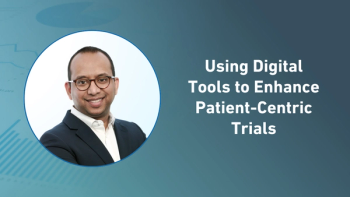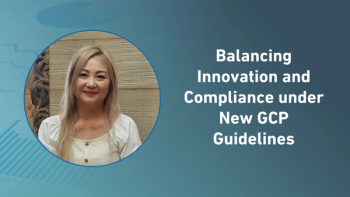Key Takeaways
- Clinical trial processes lag behind scientific and technological advances. While the science and tools exist to run faster, more inclusive, and efficient trials, outdated mindsets, rigid protocols, and operational inertia are holding the system back.
- Smarter, more inclusive trial design is essential. Modernizing trials requires reducing protocol complexity, expanding eligibility criteria, supporting underutilized sites, and prioritizing participant convenience to improve equity and real-world applicability.
- Sustained collaboration and infrastructure investment are key. Lessons from the COVID-19 response show what's possible when stakeholders work together, but lasting change will require ongoing coordination, support for emerging sites, and embedding flexibility into the clinical research framework.
Clinical research has never been more capable of reaching new frontiers. The science is here. The technology is here. But the approach to trial design and execution hasn’t kept pace. The clinical research ecosystem proceeds cautiously for good reasons—patient safety chief among them. But too often, we’re held back by fixed mindsets and outdated processes. The result? A growing disconnect between what’s possible in theory and what’s delivered in practice.
It’s time to push harder to catch up. We must evolve through smarter use of data, more inclusive and efficient trial design, and a rethinking of how we engage and support investigators and sites. The good news is, we’re not starting from zero.
There’s momentum to work with and plenty of lessons to draw from, particularly in how the industry came together during the COVID-19 pandemic. But unless we address persistent structural challenges, that progress will remain isolated and fragile.
The structural constraints holding trials back
Clinical research has taken steps toward modernization, namely by testing new trial models, integrating new technologies, and engaging more global sites. But much of that advancement has been inconsistent, and in many areas, it remains difficult to replicate or sustain. While therapies grow more complex, and expectations around speed, equity, and real-world applicability rise, the operational demands are stretching existing processes to their limits.
While some of the complexity facing trials today is driven by advances in science, much of it results from how trials are designed. Therapies such as CAR-T require tailored operational models, but many others do not.
In many cases, the added complexity is incremental, such as the inclusion of a companion diagnostic or genetic test. And yet, protocol complexity has steadily increased: more endpoints, more procedures, and more data.
Some of this is rooted in operational risk aversion and concerns around meeting regulator expectations. Too often, we continue to rely on narrow patient eligibility criteria and fixed expectations around what qualifies a site to participate. Meanwhile, many capable community-based providers are passed over because they haven’t hit legacy experience thresholds.
We’ve seen what’s possible when the industry comes together, as it did during the pandemic; however, those moments of collaboration haven’t been sufficiently scaled or sustained. Until they are, real change will remain elusive.
Reframing the enrollment challenge
Trial delays are often attributed to a lack of eligible participants, but frequently the real culprit is in trial design and execution. Millions of individuals may have conditions the medication is intended to treat, yet are excluded from participation by narrow inclusion criteria, or discouraged by the demands placed on patients and caregivers alike.
Even when modern tools such as electronic health records or real-world data platforms can be employed to identify potential participants, legacy design practices—such as those that favor sites located in or near urban areas—can disqualify them before enrollment begins. To build a truly equitable and responsive trial model, we must shift focus from identifying participants to enabling their participation. That means reducing screen failure rates and designing studies that fit more seamlessly into patients’ lives.
Strengthening the clinical research workforce
Modernizing clinical trials depends on cultivating a sustainable, well-supported investigator and site network. Still, turnover remains high. According to one study,1 nearly 45% of investigators who conduct just one FDA-regulated trial express interest in doing more but lack access to future opportunities. Another 28% report personal or institutional limitations that prevent continued involvement.
Protocol complexity, administrative burden, and inconsistent support structures often make continued involvement unsustainable, especially for community-based sites or newer investigators. If we want to expand research access and meet growing demand, we need to focus on investigator and site retention and infrastructure development, not just recruitment.
Equity and representativeness in clinical trials also hinge on supporting sites over the long term. Patient burden and continuity of care are equally important. Sites embedded within or near community health centers—where patients already receive care—are often best positioned to reach underrepresented populations, provided they have the tools and resources to remain active.
What COVID showed us—and why it still matters
The pandemic response revealed what’s possible when the clinical research ecosystem works cooperatively. Sponsors, regulators, sites, and even competitors worked together to simplify protocols and expand access, all at unprecedented speed. However, that model of pragmatic collaboration remains the exception, not the rule.
Post-pandemic, we’ve struggled to industrialize that mindset. Deliberative and flexible approaches to study designs must become more common rather than one-off emergency responses. This kind of robust collaboration is critical to solving real-world operational problems rapidly.
A clear example is the swift development and deployment of COVID vaccines. Facing extraordinary circumstances, key stakeholders came together to move vaccine trials forward at a pace previously thought impossible. Trial timelines were shortened, protocols were streamlined, and trials were designed to be fit-for-purpose in the face of urgent need. Vaccine trials demonstrated that, with shared urgency and coordinated effort, the system can move faster without compromising safety. The challenge now is to think beyond emergency response and translate that spirit of collaboration into everyday clinical development.
Three opportunities to modernize the model
Regulatory bodies around the world have indeed recognized the need for change. Initiatives such as the FDA’s Clinical Trials Transformation Initiative are promoting the use of real-world data and encouraging more pragmatic, point-of-care trial designs. These approaches offer a path toward studies that better reflect routine care. While progress continues to build, it has proven challenging to transition from pilot to scale, and adoption across the industry remains uneven.
To better align the clinical development process with scientific advancement, three priorities stand out:
1. Smarter use of data. Technology is enabling better access to patient-level and site-level data than ever before; it’s time to make better use of it. Real-world data holds potential to reshape trial design by broadening who qualifies, uncovering overlooked investigators, and challenging assumptions about protocol requirements. Its real value depends on how we use it. Unless it goes beyond just the recruitment plan to inform the structure and strategy of a study, that potential will remain unrealized.
Today, we often find the right patients thanks to this data but then fail to include them because of inflexible protocol criteria. Likewise, we sometimes exclude capable sites because they haven’t enrolled in five heart failure studies in recent years, for instance—even if they have the patients, infrastructure, and expertise.
2. Support for emerging sites. Many capable sites are excluded from trial participation due to outdated infrastructure or lack of prior experience. Instead of knee-jerk reactions that limit site participation, sponsors could consider fit more broadly: Who has the patient population, the interest, and the capacity with the right support? Capability-building (not just past performance) should be considered to expand site networks.
Investments in new tools and decentralized models offer promise. They also require sustained commitment to investigator development; otherwise, these advances won’t take hold. The goal should be not only to activate new sites but also to ensure they remain engaged beyond a single trial.
3. Reducing patient and site burden. Decentralized models and flexible, simplified procedures can lower the barriers to entry for both patients and investigators. Despite their proximity to communities underrepresented in clinical research, many local sites are sidelined by requirements that could be reconsidered, such as technical validations or documentation protocols that add friction instead of value. Operational and regulatory flexibility can address these access challenges.
Sponsors have a key role to play here. Whether in visit frequency, procedure types, or data collection requirements, building site feedback into trial design and introducing flexibility can encourage broader participation and improve trial resilience.
Small operational changes, when made thoughtfully, can have an outsized impact on improving enrollment, retention, and equity.
Bridging science and access
No single stakeholder can modernize clinical development alone. Progress depends on reimagining how we design studies, who we involve, and how we define value. It means embedding equity and feasibility from the start, not bolting them on later.
By acting on the lessons of recent years and making targeted changes to long-standing practices, we can move to a clinical trial model that makes far better use of scientific and technological innovation.
This evolution will take time and persistence. But through the dedicated efforts of collaborative initiatives, TransCelerate and its partners among them, practical solutions are surfacing. This is the work that will ultimately determine whether scientific breakthroughs reach the patients who need them most—and whether our healthcare system can sustainably deliver the next generation of treatments.
Allison Cuff Shimooka is Chief Operating Officer at TransCelerate BioPharma
Reference
1. Corneli, A.; Christine, P.; Hinkley, T.; et al. One and Done: Reasons Principal Investigators Conduct Only One FDA-Regulated Drug Trial. Contemp Clin Trials Commun. 2017. 3 (6), 31-38. https://pubmed.ncbi.nlm.nih.gov/29740635/







.png)



.png)



.png)
.png)
